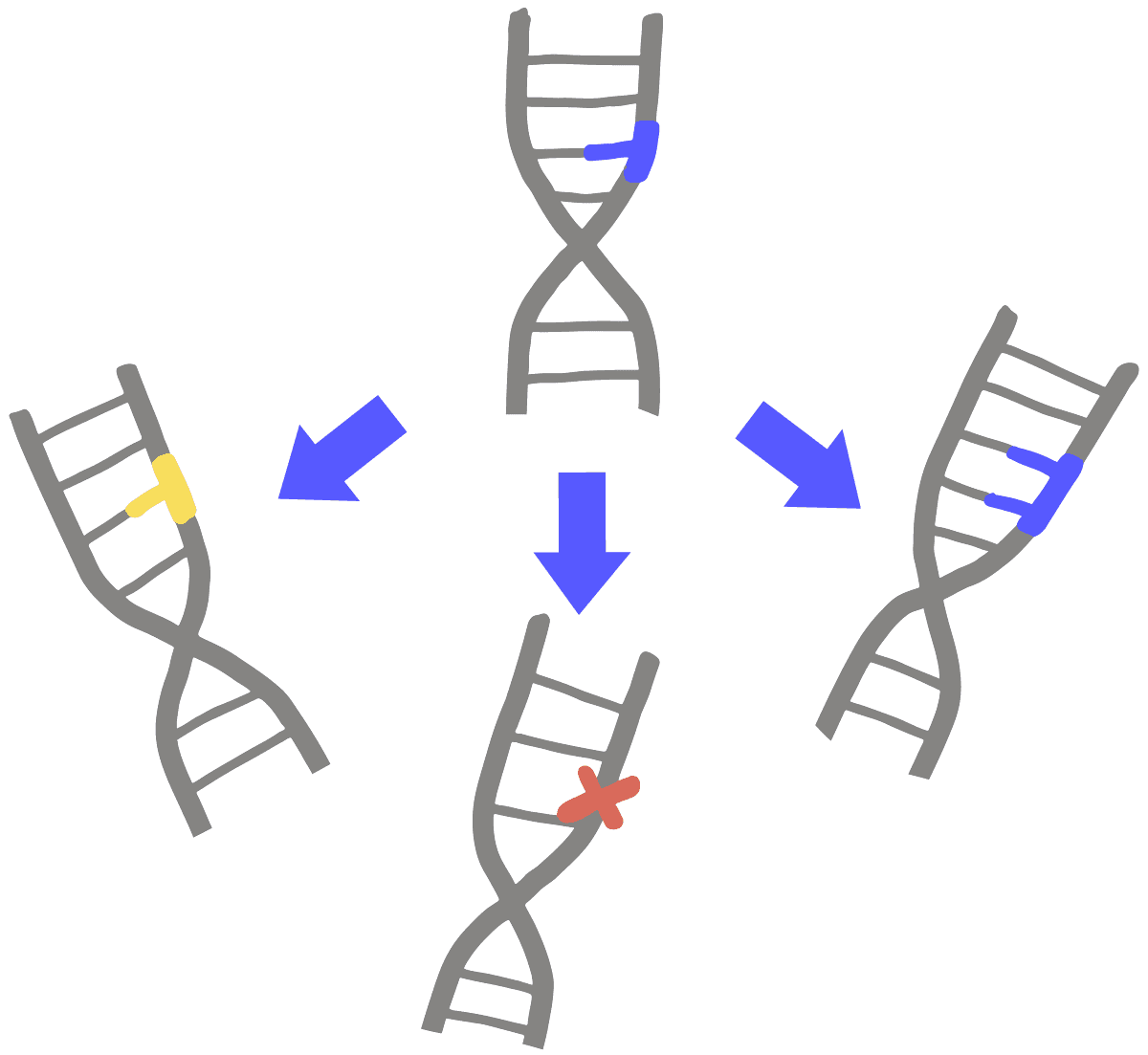What Type Of Mutation Is The Rem
In the intricate tapestry of biological diversity, mutations act as the threads of innovation, driving evolution and adaptation across generations. The term “mutation” often evokes thoughts of genetic alterations, diseases, and anomalies, yet it is essential to embrace a more nuanced understanding. Among the myriad forms of mutations, a particularly intriguing example lies within the realm of the Rem, a concept that transcends mere genetic terminology. This article delves into the various types of mutations, exploring their implications, mechanisms, and the deeper significance they hold within the broader context of life.
The term “mutation” encapsulates several forms of change that can manifest at the molecular level within an organism’s genome. Broadly speaking, mutations are categorized into two principal types: somatic mutations and germline mutations. Somatic mutations occur in non-reproductive cells and thus do not get passed on to subsequent generations. In contrast, germline mutations arise in the reproductive cells and can be transmitted to offspring, influencing the evolutionary trajectory of species.
One of the classic forms of mutation is the point mutation, which denotes a single nucleotide change in the DNA sequence. This seemingly minuscule alteration can engender significant consequences, resulting in misfolded proteins or dysfunctional enzymes. Point mutations can lead to various outcomes: silent mutations, which produce no change in the resulting protein; missense mutations, causing a different amino acid to be incorporated; and nonsense mutations, introducing a premature stop codon. Each of these scenarios exemplifies the volatile nature of genetic material, where even minor alterations can cascade into broader biological impacts.
On a grander scale, one encounters larger chromosomal mutations, which can be equally transformative. These encompass deletions, duplications, inversions, and translocations. Deletion mutations result in the loss of a segment of DNA, while duplications create redundant copies of genetic material. Inversions flip sections of DNA, altering gene expression without removing genetic content. Translocation mutations involve the relocation of segments across different chromosomes, often disrupting the delicate equilibrium of genes and regulatory elements. These shapes of mutations illuminate the complexity of genetic architecture and the potential for significant phenotypic variation even through structural changes.
Another fascinating aspect is the role of mutations in the adaptation of organisms to their environments. The classic example of antibiotic resistance in bacteria elucidates how mutations confer survival advantages. Through a straightforward mutation, bacteria can enhance their ability to thrive despite the presence of antibiotics, displaying an astonishing ability to adapt to limiting conditions. In a broader ecological tapestry, these mutations emphasize the importance of genetic variation as a vehicle for natural selection.
However, not all mutations are beneficial—many can have deleterious effects that compromise an organism’s fitness. Some mutations may predispose individuals to hereditary diseases, such as cystic fibrosis or Huntington’s disease. Understanding the mutations underpinning these conditions is crucial for developing targeted therapies and interventions, as well as for providing insight into genetic counseling. Additionally, the precarious balance between mutation and stability is pivotal; a genome must retain enough flexibility to adapt, yet enough integrity to ensure the survival of the organism.
The deeper meaning of mutations within the context of the Rem concept emerges when one considers the philosophical implications of change. Just as mutations catalyze evolutionary processes, they reflect the inherent dynamism of life itself. The universe is not static; it is perpetually in flux, shaped by myriad factors that influence the trajectory of existence. In this view, mutations are not merely biological phenomena but manifestations of a larger narrative about resilience and adaptation. They symbolize survival in the face of adversity, illustrating how organisms navigate challenges, often at the molecular level.
In the digital landscape, the notion of “rem” has taken on a life of its own, particularly in forums discussing innovative tools and applications. The Rem represents a unit of memory and knowledge, akin to the genetic material in living organisms. Much like mutations in biological systems, the Rem evolves. As users interact with this concept, they inherently contribute to its development, much as mutations drive species variation. The evolution of the Rem underscores the interconnectedness of knowledge, technology, and human creativity, forging a pathway toward unprecedented advancements.
Moreover, in the context of biotechnology and synthetic biology, the study of mutations takes on a critical role. As scientists manipulate genetic material for various applications—including gene therapy and genetically modified organisms—understanding the nature and consequences of mutations becomes imperative. The potential for both positive outcomes, such as disease prevention, and negative outcomes, such as unforeseen ecological ramifications, underscores the duality inherent in genetic manipulation.
In conclusion, the exploration of mutation unveils a rich tapestry of biological, philosophical, and technological intersections. From the minor shifts of point mutations to the transformative nature of chromosomal rearrangements, mutations serve as the bedrock of genetic diversity and adaptability. Their significance extends beyond biology, echoing through the greater narrative of existence. The evolution of the Rem resonates with these themes, reminding us that change is an indelible part of our Co-creation journey, shaping the future in ways that are both profound and unpredictable.
If you are searching about ANNO: Mutationem Review - RPGamer you’ve visit to the right place. We have 10 Images about ANNO: Mutationem Review - RPGamer like Mutation - Innovative Genomics Institute (IGI), Characterization of REM13 mutants. a Position of rem13-1 (rem13_oe) and and also Mutation - Innovative Genomics Institute (IGI). Here it is:
ANNO: Mutationem Review - RPGamer
 rpgamer.com### Genetic Mutation Types
rpgamer.com### Genetic Mutation Types
 www.animalia-life.club### Mutation Rates Of Different RET Mutation Sites | Download Scientific
www.animalia-life.club### Mutation Rates Of Different RET Mutation Sites | Download Scientific
 www.researchgate.net### Rem Re Zero Weapon, HD Png Download , Transparent Png Image - PNGitem
www.researchgate.net### Rem Re Zero Weapon, HD Png Download , Transparent Png Image - PNGitem
 www.pngitem.com### Figure Showing Excessive REM Movements During REM Stage Indicating High
www.pngitem.com### Figure Showing Excessive REM Movements During REM Stage Indicating High
 www.researchgate.net### Characterization Of REM13 Mutants. A Position Of Rem13-1 (rem13_oe) And
www.researchgate.net### Characterization Of REM13 Mutants. A Position Of Rem13-1 (rem13_oe) And
 www.researchgate.net### Mutation - Innovative Genomics Institute (IGI)
www.researchgate.net### Mutation - Innovative Genomics Institute (IGI)
 innovativegenomics.orgmutation genetic webstockreview genomics igi mutations licenses creativecommons substitution innovativegenomics
innovativegenomics.orgmutation genetic webstockreview genomics igi mutations licenses creativecommons substitution innovativegenomics
Rem Sleep Reddit At Paul Lee Blog
 fyoeniemi.blob.core.windows.net### (PDF) The Bacterial Reverse Mutation Test
fyoeniemi.blob.core.windows.net### (PDF) The Bacterial Reverse Mutation Test
 www.academia.edu### New Version Has Made It UNABLE To Change Rem Type. 🙄 - Bug Reports
www.academia.edu### New Version Has Made It UNABLE To Change Rem Type. 🙄 - Bug Reports
 forum.remnote.io
forum.remnote.io
